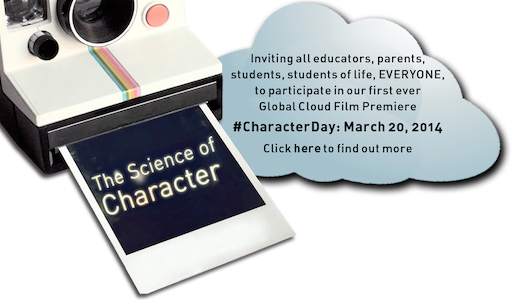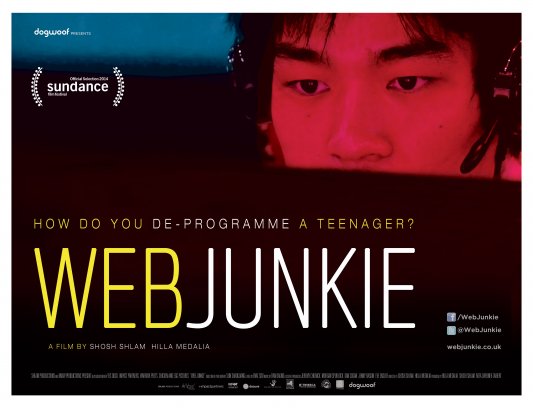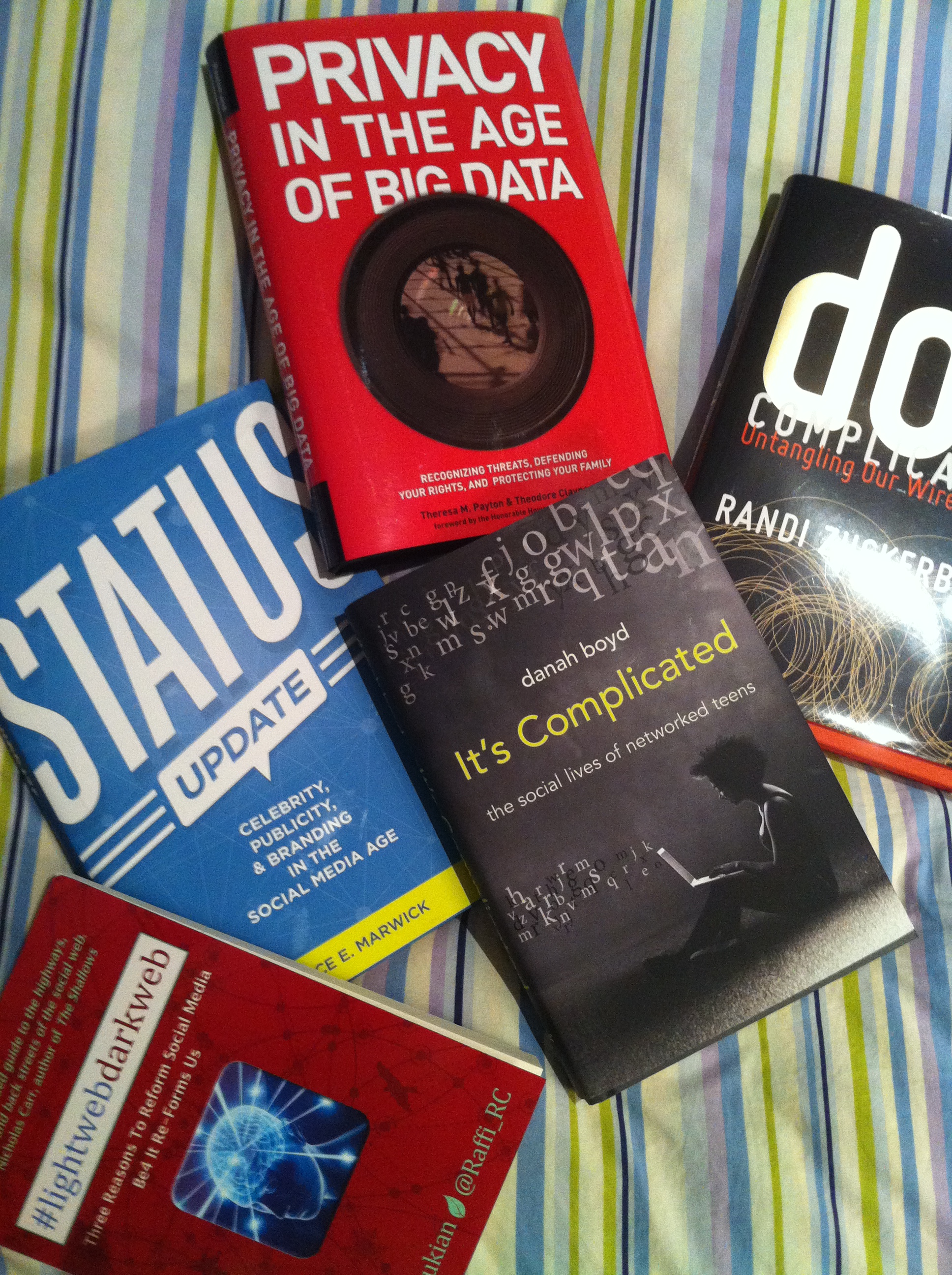 Feb. 21, 2014 For the first time ever, Sundance Film Institute added a Sundance Kids division, to introduce and inspire youth with indie films…alas, I couldn’t find anyone who knew about it.
Feb. 21, 2014 For the first time ever, Sundance Film Institute added a Sundance Kids division, to introduce and inspire youth with indie films…alas, I couldn’t find anyone who knew about it.
It’s been a month since Sundance, and though I’ve asked around repeatedly, even fellow media/screenwriter pals like Dana Moe Halley, who is covering some of the films focusing on families for Shaping Youth today didn’t see a presence.
With only two films seeding the new Sundance Kids collaboration with Tumbleweeds and The Utah Film Center (one world premiere and one U.S. premiere) the entity took on more of a ‘coming soon’ positioning to launch the excitement of a kids’ track in the international and independent realm than a “featured attraction” search light extravaganza.
That said, it’s watch worthy to see what develops, as every year I follow along from afar to glean what fits Shaping Youth’s focus dealing with “media and marketing’s impact on kids,” and have unearthed some gems that have pointed to a much larger cultural conversation. Example?
 When Tiffany Shlain premiered her poignantly personal Sundance 2011 film “Connected” An Autoblogography About Love, Death & Technology it felt like the shoulder shake we all needed to awaken the sleeping giant within us to focus in full ‘surround sound’ about media’s pervasive role in our lives.
When Tiffany Shlain premiered her poignantly personal Sundance 2011 film “Connected” An Autoblogography About Love, Death & Technology it felt like the shoulder shake we all needed to awaken the sleeping giant within us to focus in full ‘surround sound’ about media’s pervasive role in our lives.
With 14+ accolades, including the Disruptive Innovation award at Tribeca Film Festival, Connected is now widespread on just about every platform imaginable and touring worldwide, as she moves on to her March 20, 2014 global cloud film premiere of The Science of Character which we’ll be supporting in partnership with NAMLE creating ripples of change at the high school level!
My point is, Sundance often points to future trends; Connected was the prescient rumble and release vent like a steam fissure in a volcano of a huge eruption…Clearly filmmakers were just getting started, with Pele-style, powerful fiery flows on the very hot topic of the impact of the internet and media… Sundance 2014 boasts an entire slew of powerful documentaries asking us to look hard at our media use in form and function, bring up the big questions and assess ‘the dark side’ of internet and social media mindshare. Fascinating.
 From Morgan Spurlock’s Web Junkie documentary about China’s treatment of teens’ “internet addiction” (which was scooped up and bought by the BBC almost instantaneously post-premiere) to the jarringly disturbing South Korean film “Love Child” about gaming culture gone gonzo when a couple lets their two-year old die at home while out at internet cafes immersed in fantasy, and The Internet’s Own Boy: The Story of Aaron Swartz documenting the suicide of the 26-year old wunderkind and activist, the contemplation of online/offline enmeshment and virtual blurring of boundaries has ratcheted up the societal commentary.
From Morgan Spurlock’s Web Junkie documentary about China’s treatment of teens’ “internet addiction” (which was scooped up and bought by the BBC almost instantaneously post-premiere) to the jarringly disturbing South Korean film “Love Child” about gaming culture gone gonzo when a couple lets their two-year old die at home while out at internet cafes immersed in fantasy, and The Internet’s Own Boy: The Story of Aaron Swartz documenting the suicide of the 26-year old wunderkind and activist, the contemplation of online/offline enmeshment and virtual blurring of boundaries has ratcheted up the societal commentary.
 I’m seeing this echoed in print media too, with books like “Light Web, Dark Web” the new It’s Complicated by danah boyd, Dot Complicated by Randi Zuckerberg, Status Update, Privacy in the Age of Big Data, etc. all recently released.
I’m seeing this echoed in print media too, with books like “Light Web, Dark Web” the new It’s Complicated by danah boyd, Dot Complicated by Randi Zuckerberg, Status Update, Privacy in the Age of Big Data, etc. all recently released.
Clearly, the zeitgeist is traveling in flashing yellow warning light mode, as if trying to switch the track on a runaway media train to regain control of the cultural conversation amidst ‘overwhelm’…and try to balance media literacy with collective consciousness.
Something to watch as we see ‘digital detox’ and ‘information overload’ enter the lexicon at ever younger ages and words like ‘exhausted’ crop up in a social media context of ‘keeping up’ even among teens.
2014 could be THE year of assessing media BALANCE for mental and physical health.
Speaking of mental health and media…Though Shaping Youth usually covers analysis of media and marketing impact over film reviews, today, I’m thrilled to toss in both, with Dana Moe Halley’s annual Sundance guest post providing us her personal picks that point to some profound positive shifts in removing mental health stigma via media narrative.
In addition to portraying diversity in families with an elongated lens, and zooming in on ‘less than perfect’ childhoods over Hollywood cookie cutter fantasy, Dana notes that these poignant films will no doubt swirl into your sphere as theatrical releases in the coming year…
So heads up, and enjoy Dana’s front row seat at the show!
Letter from Sundance
by Dana Moe Halley
I’m still reeling, no pun intended, after seeing 14 films in just five days in Park City this year. (at left, Dana Moe Halley with Mark Ruffalo)
In a typical year, it’s the documentaries that stand out for me at Sundance, but this year, the drought-stricken ski town also screened a flurry of narrative features that will be capturing the attention of theatrical audiences in the coming year. Two of my personal favorites center around childhood and parenting (and coincidentally, both put their directors’ daughters in key roles).
In writer-director Maya Forbes’ partially autobiographical feature, Infinitely Polar Bear, (which just got acquired by Sony Pictures Classics) Cameron, (Mark Ruffalo) with bipolar disorder takes on full-time care of his two young daughters, Amelia (Maya Forbes’ daughter Imogene Walodarsky) and Becca (Georgia Lyman) while his wife, Maggie (Zoe Saldana) pursues a graduate degree out of state. (Cast, shown at left via The Wrap)
Home life is chaotic. There are no visible signs of income and the mountains of clutter in the apartment make it nearly uninhabitable during Cameron’s manic episodes. Plus, his occasional trips to the local bar in the middle of the night, in his bathrobe, no less, invoke extreme fear in his left-behind offspring–and make you wonder if there was a social worker in the picture. The story takes place in the mid-1970s when the concept of the single dad was completely foreign to most, including neighbor housewives, who instead of being helpful, treat the odd, but big-hearted Cameron like a leper.
Interesting that mental illness seems to have made its way to both prime time TV and the silver screen in recent years. Last year’s Silver Linings Playbook focused on the starring characters’ mental disorders. In the Bradley Cooper role, bipolar disorder, and in Jennnifer Lawrence’s an unspecified (and frankly unconvincing) affliction. One could argue that casting Bradley Cooper and Jennifer Lawrence as the leads in Silver Linings glamorized mental illness in a way that a cast of more ordinary-looking actors wouldn’t have. But the fact stands that the film, to the extent that the portrayal was at least partially believable, made a step toward de-stigmatizing mental illness in cinema.
When you think how Me, Myself & Irene, released in 2000, made personality disorder look like a vile absurdity, it’s clear that film and television have come a long way in bringing mental illness out of the closet. Consider the vast popularity of Homeland, in which leading character Carrie suffers from bipolar disorder. She’s a mess when she’s not on her meds, but when she is, she’s extremely high functioning and beyond brilliant.
In Infinitely Polar Bear, Cameron is so attached to his girls that he follows them around the playground and tries to horn in on their play dates, which of course is beyond annoying to prepubescent girls. But in the end, his complete devotion to his children overshadows his parental deficiencies. How realistic is that? Well, in this case, very.
When I spoke to Maya Forbes after her film’s screening, she told me that once her childhood friends understood that her dad had a mental disability, they were comfortable with it (despite their mothers’ less welcoming attitudes) and her apartment become the fun place to hang out after school. Forbes displayed no resentment regarding her mom’s decision to leave them to pursue her degree.
In fact, Forbes went on to graduate from Harvard, and immediately embark on an illustrious career in a male-dominated field (television writing). Clearly she was shaped by the emphasis on education and career that her mother modeled. There’s no question life was rocky being raised by a dad with unpredictable mood swings and zero housekeeping skills, but in the end, Forbes had a close paternal relationship, something that few kids raised in the seventies (or the eighties for that matter) had.
Another strong highlight of this year’s festival also depicted an imperfect family: Boyhood, Richard Linklater’s tale about the life of a boy (Mason Jr., played by the incredibly natural Ellar Coltrane) from age seven to age 19.
This is not a documentary, a la Michael Apted’s Seven Up series, but rather a narrative in which Linklater filmed the same four characters, Mason Junior, his older sister Samantha (played by Linklater’s daughter Lorelei), his mother Olivia (Patricia Arquette) and his father Mason Senior (played by Linklater regular Ethan Hawke) for three to five days annually over the course of 12 years.**
It was an admirably ambitious project and one that could have gone wrong in so many different ways over the course of 12 years. Actors could have gotten sick, died, or signed on to other projects. But because none of them did any of these things, we are treated to the extraordinary experience of literally watching Mason and his sister grow up on screen.
It is that very middle-class ordinariness of Mason’s family that makes Boyhood so realistic and compelling. His parents, who are already divorced at the onset of the story, live in modest houses (dad even shares his with roommates), drive average American cars, and struggle to pay the bills. It’s a refreshing change from the usual aspirational settings of so many Hollywood movies.
They also make the kind of mistakes un-perfect people make–Mason senior reneges on a promise made to his son not because he changed his mind, but because he simply forgot he’d made the promise (or so he says). Olivia makes one of three unfortunate partner choices in rashly marrying her college teacher who turns out to be a verbally and physically abusive alcoholic (the next husband, albeit not a physical abuser, succumbs to the same affliction). Despite her marital missteps, Olivia is a loving mom who wants the best for her kids. Mason senior, as disorganized as he often appears (he’s barely making ends meet) is a loving, devoted father.
In one standout scene, he lectures daughter Samantha on the importance of using birth control, but he makes his case by speaking to her in just the right tone, more peer-like than stern. And he injects just the right amount of humor, urging her not to end up like Bristol Palin. Watching this scene unfold, we feel Samantha’s desire to disappear under the table and we cringe a bit ourselves. After all, she’s 17, her brother is right there and her father is talking to her about condoms. Awkwardness aside, it’s a brave, loving lecture, and a cinematic “teaching moment” for any parent.
One of the film’s most poignant moments occurs when Mason is about to leave home for college and his mother rhetorically asks, “Is that it? I thought there would be more.” It’s a sentiment any parent who has experienced the emptying of the nest will understand. Life is just a blur, but Linklater’s film (with a 2.5+ hour running time) lets us stop and savor some sweet moments. Is there sequel on the horizon? None that Linklater has announced. But then again, he kept Boyhood under wraps for 12 years and if you’ve heard of his Before Sunrise/Sunset/Midnight trilogy, you know he’s a director who’s not adverse to sequels. Fingers crossed here.
Examining the other end of the age spectrum was Michael Rossato-Bennett’s Alive Inside.
The documentary tells the story of Dan Cohen, a social worker, who decides on a whim to bring iPods to a nursing home to see how the music might affect dementia patients.
The subjects, who range in age from their fifties to their nineties, have varying degrees of cognitive function loss. Some could no longer articulate their thoughts or speak at all. Some could walk, others were wheelchair bound or bedridden. A middle-aged woman with schizophrenia was prone to hostility. All were disconnected from the world they once knew.
But upon hearing the music they loved in their younger years, the patients seemed to almost miraculously “come alive.” Moods brightened, emotions emerged. Some sang along with lyrics, others got up and danced. Several simply displayed a brighter countenance. One woman took to wearing her headphones at all times, rocking out to tunes from the sixties. The woman with schizophrenia cried tears of happiness upon hearing the music she had loved. To watch the amazing success of Cohen’s experiment was amazingly heart-warming, and the film received a well-deserved standing ovation.
I was especially moved by the film as my 83-year old father is in the advanced stages of Alzheimer’s and lives in an assisted care facility. Motivated to perform my own “Alive Inside experiment,” I loaded up an iPod shuffle with the jazz tunes he discovered in his twenties and listened to until his mid-seventies, when music became an annoyance rather than a pleasure. He didn’t mind when I put the headphones on and he responded immediately to his music. Though he didn’t sing the lyrics aloud, he listened closely to the sounds, concentrating in a way I hadn’t seen him do in years. He soon began tapping his feet and nodding his head to the beat.
He doesn’t always want to listen to the iPod and sometimes rejects the headphones. But most of the time he welcomes them and is calmed by the music. When he was recently hospitalized, the iPod became a great way to offset his discomfort and agitation. I thank Michael Rossato-Bennett and Dan Cohen for that gift. —Dana Moe Halley
Dana Moe Halley received her degree in Film Studies (with a concentration on Italian neo-realist cinema) from U.C. Berkeley. She is a screenwriter, marketing copywriter/editor and unrelenting film fanatic. Know of a documentary or narrative fiction film you’d like to see reviewed? Contact Dana at dmoehalley@gmail.com
This is Dana’s fourth film review contribution to Shaping Youth.
Stay tuned for more on media’s portrayal of mental and physical health, as I have a long overdue interview on the depiction of autism in TV and film to post with author of The Thinking Person’s Guide to Autism, Shannon Des Rochas Rosa. Thanks, Dana, for the insights and here’s hoping I can do a follow up on the media/internet Sundance documentaries before they all get sold into pay-walled products through various distribution channels…
**Amy’s note: Regarding Dana’s comment about films charting real life progression, also see my recent post about American Promise, a 2013 Sundance Jury Award winner, documenting two boys over the course of 13 years; about systemic educational flaws involving black male achievement
Visual Credits: Sundance Logo/mountains via HannahMurrayNews.com; Infinitely Polar Bear cast via The Wrap as linked previously and Sundance Channel, Alive Inside via Sundance Film Guide and Boyhood cast visual via Entertainment Weekly,








Speak Your Mind